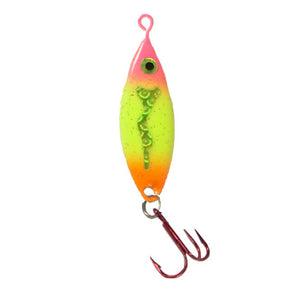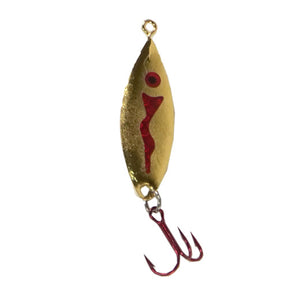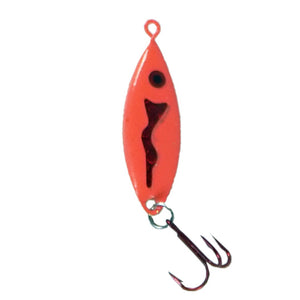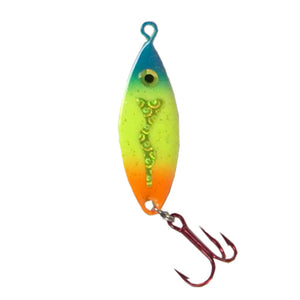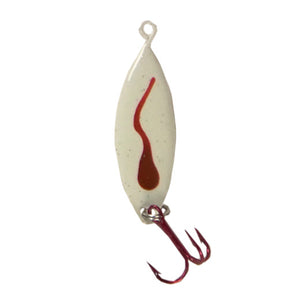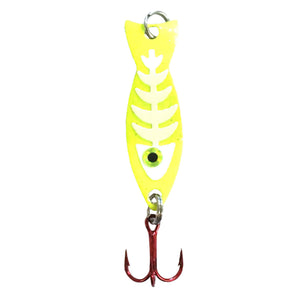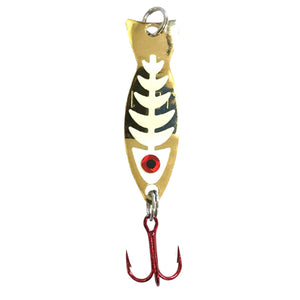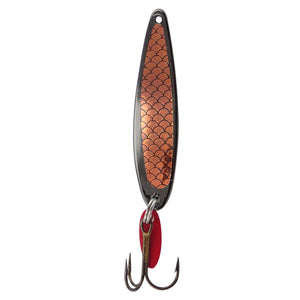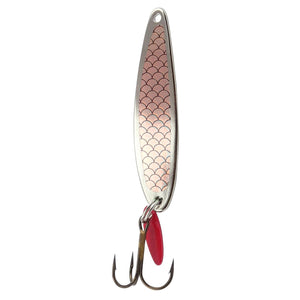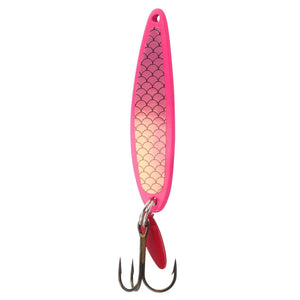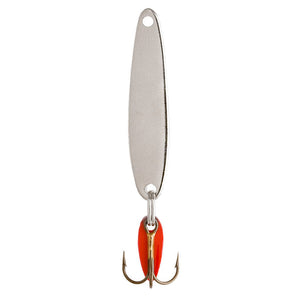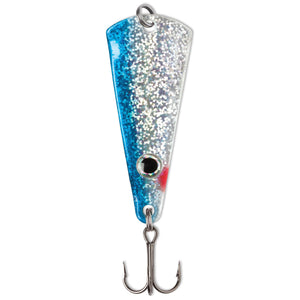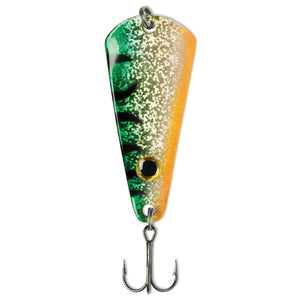
So, it’s likely you are one of the many ice anglers who have turned to small tungsten jigs when chasing winter crappie.
Great choice…tungsten is about 30% heavier than lead baits of similar size, so it does many things better than lead…faster fall rate to get on deep fish faster…busting through slush…downsizing without losing control of the bait…and keeping a tighter line to help you feel those light biters.
But there are times when you should put the jigs away and tie on a spoon when chasing crappies.
Why Spoons?
In many ways, small jigging spoons are the perfect winter crappie baits as there are so many models and so many colors and sizes, you can easily match the spoon to the mood of the fish.
Spoons can be ripped aggressively for actively feeding fish, used on a dead stick for inactive days, or can be worked anywhere in between.
I like 1/16-ounce models in most cases, but will upsize to 1/10 or 1/8 models when crappie are aggressive.
Spoons’ larger profiles and treble hooks give you more options for tipping with live bait or soft plastics. Whether you add a traditional grub or upsize to a minnow or minnow head, the flexibility is there to match exactly what the fish want. They also make a great platform to use a variety of soft plastics or even allow the use of multiples at one time.
I tip spoons with both plastics like 13 Fishing’s Coconut Crab or Gulp Wax Worms, often filling each hook with a single bait.
When fishing larger schools, stop the bait 3 to 4 feet above the school, and let the fish come up to the bait. If there are no takers, lower the bait slowly into the school and fish subtly so you don’t spook fish.
Hook-up ratios with spoons are usually outstanding and you lose far less fish than when using single-hook baits. In most cases, you’ll hook spoon-feeding crappie dead center in the top of the mouth, not the soft, paper-thin areas of the mouth.
Spoons’ Fishability
I like spoons for ice crappie for other reasons, too, including their fishability. For one, spoons generally weigh more than most ice flies so they fall fast, smash through slush and with their larger profile, they often trigger the biggest fish in the school.
And with their greater weight, they do particularly well in windy conditions where feeling with a tungsten jig is virtually impossible as the line constantly blows around. Their added size also shows up better on sonar, particularly when targeting suspended fish in 40 or 50 feet of water.
Some of my favorites are the JB Ghost Spoon (1/8 ounce), Swedish Pimple (1/10), VMC Rattle Spoon (1/16) and the Tundra Tackle Lighted Firefly (1/8).
Attraction Plus
Spoons usually feature a main body, split ring or two, and a treble hook, and some come with other parts for added flash, sound or color. Constant jigging between the spoon and hook will put off vibrations, giving you the ability to call in fish that ignore other baits.
We’ve seen these numerous times on the Garmin LiveScope.
For a bait that gives you added sensitivity, a broader calling ability, more versatility, and better hook up capability, there is no reason to step on the ice without a couple spoon options at the ready.
And who knows, you also leave yourself open to the possibility of catching any walleye that come through the area!

